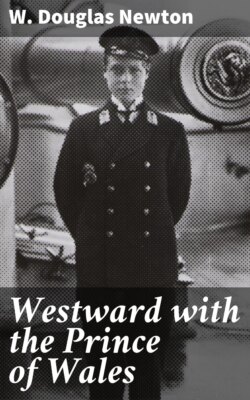Читать книгу Westward with the Prince of Wales - W. Douglas Newton - Страница 13
На сайте Литреса книга снята с продажи.
II
ОглавлениеSt. John, New Brunswick, is many things. It is the historic spot where that splendid figure in Canada's story, the great Champlain, and De Monts, came in the dim days of the West's beginning, to rear a new city in a new wild continent, and called it after the saint on whose day they first made their landing.
It is commerce if that is the way you look at things; an ice-free port, tingling with every modern activity, where lumber and grain and fruit and all the riches of Canada are swung to Europe and the West Indies, and scores of ports about the world, and where, when winter grips the immense St. Lawrence, passengers can slip, free of the ice, to the ocean tracts.
It is the gate of pleasure. The entry port where the sportsman and the holiday maker from America or Europe can start for the fine fishing streams, where salmon and trout are kings; for the spruce forests, where moose and caribou, deer and even bear can be shot, and where wild duck and the Canadian partridge—which is really grouse—are commonplace; or to the many fine holiday towns of the maritime provinces, where golf and good scenery go hand in hand.
It is romance. Here was one of the wrestling-points where France fought Britain for the supremacy of the Americas; where, even, France fought France, as one adventurer strove to wrest the riches of the fur trade from another. Somewhere on one of the ridgy shoulders of its grey-rock peninsula the wife of De Monts, in his absence, held the fort against Charnisay, only to have her garrison massacred before her eyes, when on promise of honourable terms, she opened her gates. Somewhere on another gruff shoulder of the rock was the fort that Charnisay built from the ruins of the first, and where De Monts ultimately came into his own again by marrying his conqueror's widow.
At the wharves of St. John to-day lie the ships that are heirs to the Boston clippers, links in a past of tragedy and trade, when New England men did business or battle across the waters of Fundy Bay, first as Englishmen with the French and then as independent Americans with the English.
It was these English, the United Loyalists, who came out of America in 1783, during the War of Independence, or who were forced to come out later, who really founded St. John as it stands to-day. And it was the Loyalists with their courage, tenacity, and virility who, with the sturdy French settlers of the old regime, built up the fortune and the spirit of St. John as it exists now.
It is a city of quality. It has a vivid air of attractiveness and prosperity. It is history and romance rounded off with the grain elevator.
